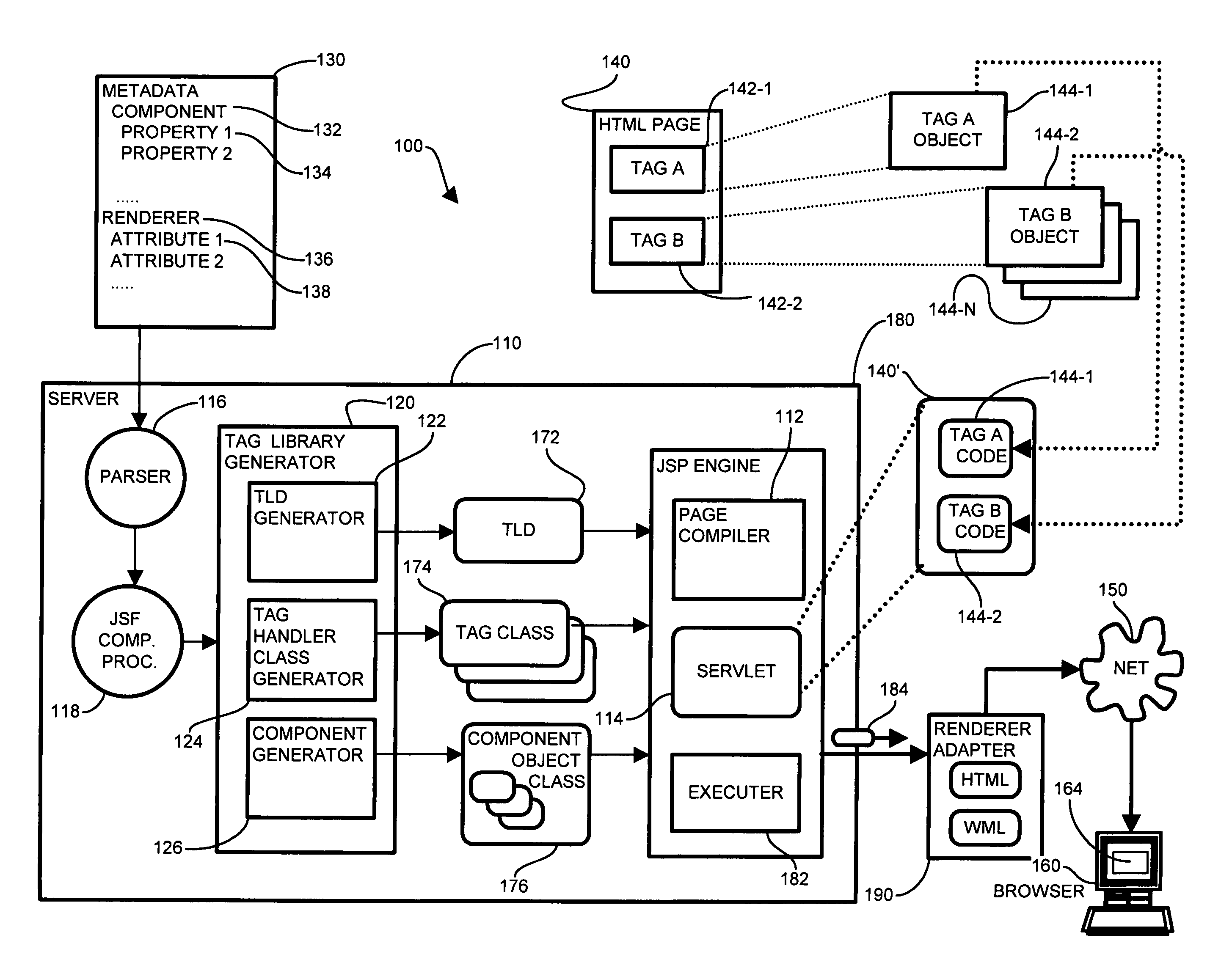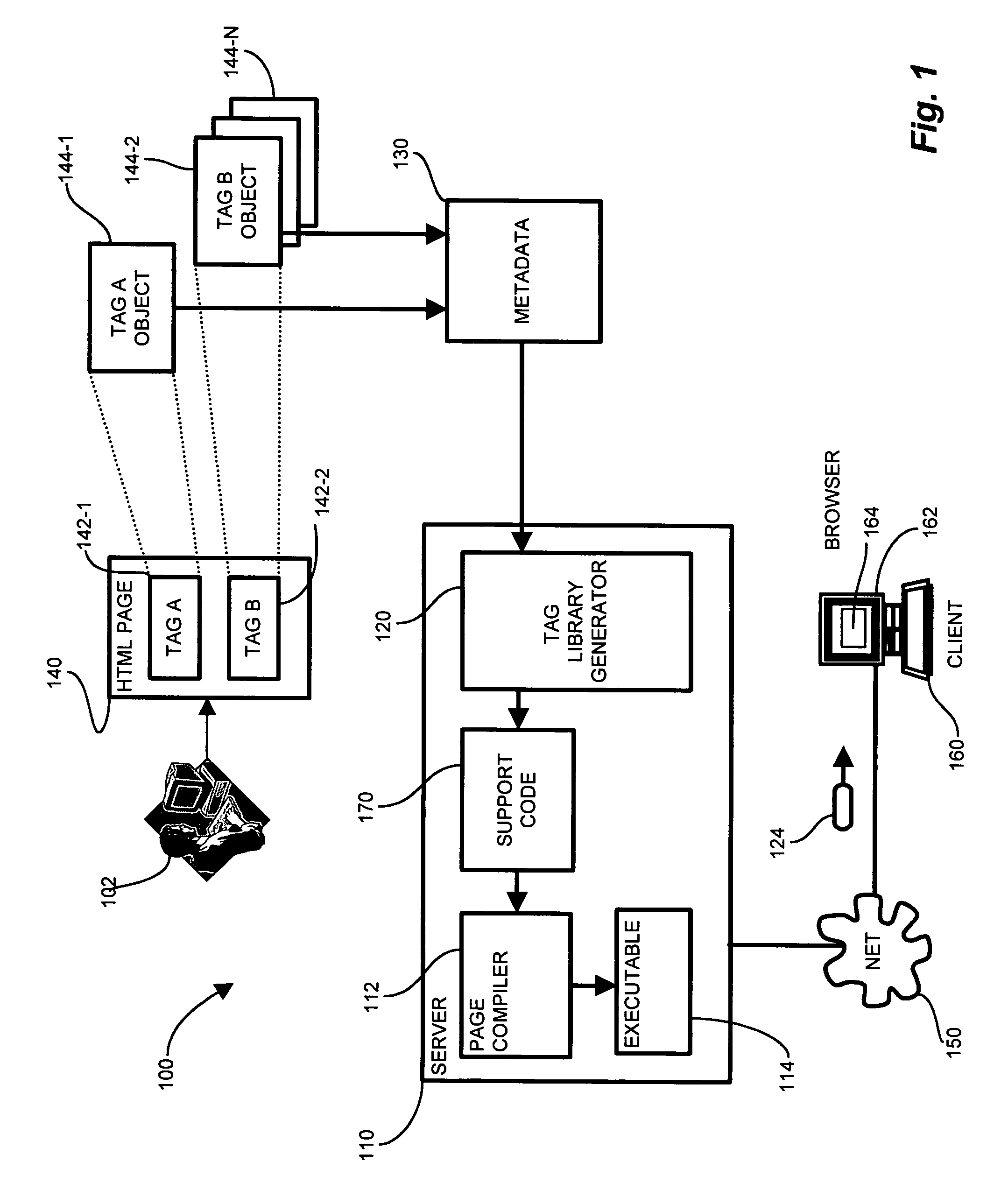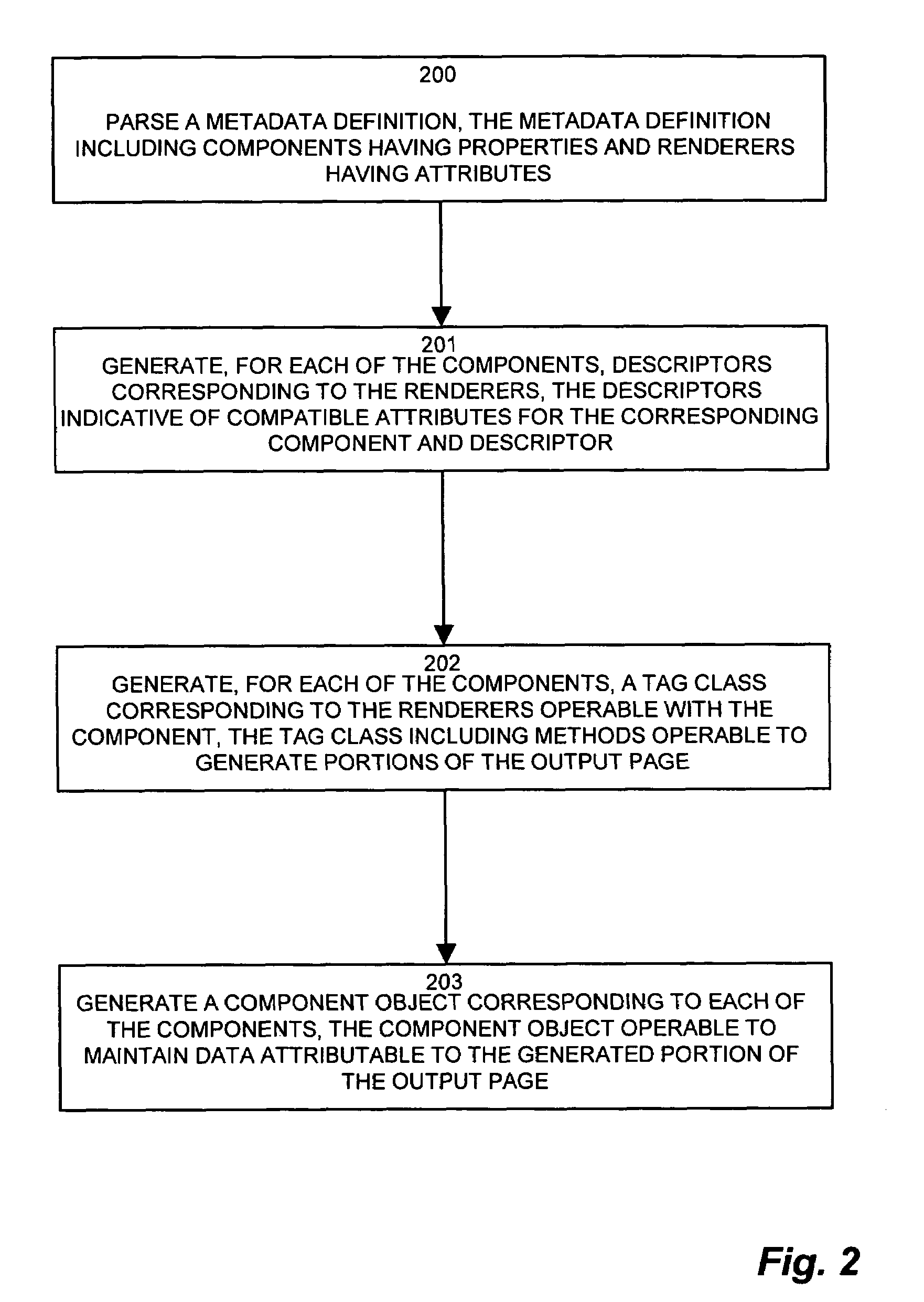System and methods for tag library generation
a tag library and library technology, applied in the field of information networks, can solve the problems of cumbersome and expensive gathering of skills for conventional web output page generation, not being fluent in the code languages employed for executing and displaying such web pages, and facilitating html delivery, so as to simplify the building of user interfaces, facilitate html delivery, and facilitate the effect of building web applications
- Summary
- Abstract
- Description
- Claims
- Application Information
AI Technical Summary
Benefits of technology
Problems solved by technology
Method used
Image
Examples
example
[0048]MetaData
Example describing how a generic “UICommand” component can be renderered as a button or link.
[0049]javax.faces.Command
[0050]javax.faces.component.UICommand
[0051][0052][0053]MethodBinding representing the application action to invoke when this component is activated by the user. The expression must evaluate to a public method that takes no parameters, and returns a String (the logical outcome) which is passed to the NavigationHandler for this application.[0054][0055]Application Action[0056][0057]action[0058]javax.faces.el.MethodBinding
[0059]
[0060][0061][0062]MethodBinding representing an action listener method that will be notified when this component is activated by the user. The expression must evaluate to a public method that takes an ActionEvent parameter, with a return type of void.[0063][0064]Action Listener[0065][0066]actionListener[0067]javax.faces.el.MethodBinding
[0068]
[0069].
[0070].
[0071].
[0072][0073]javax.faces.Command[0074]javax.faces.Button
[0075]
[0076]javax...
PUM
 Login to View More
Login to View More Abstract
Description
Claims
Application Information
 Login to View More
Login to View More - R&D
- Intellectual Property
- Life Sciences
- Materials
- Tech Scout
- Unparalleled Data Quality
- Higher Quality Content
- 60% Fewer Hallucinations
Browse by: Latest US Patents, China's latest patents, Technical Efficacy Thesaurus, Application Domain, Technology Topic, Popular Technical Reports.
© 2025 PatSnap. All rights reserved.Legal|Privacy policy|Modern Slavery Act Transparency Statement|Sitemap|About US| Contact US: help@patsnap.com



